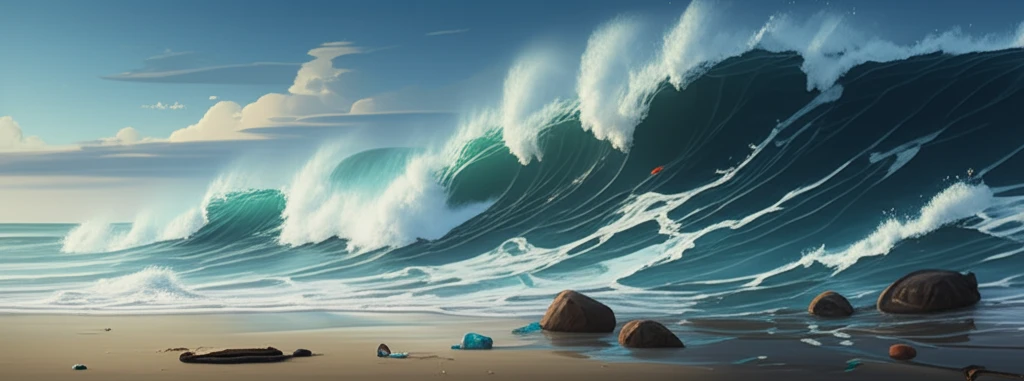
Vanishing Coastlines: Can We Win the Fight Against Plastic Pollution?
"A New Model Reveals the Complex Dance Between Wind, Tides, and Trash on Our Beaches"
Our oceans are drowning in plastic. From the deepest trenches to the most remote shorelines, plastic pollution has become an undeniable crisis. Macroplastics and microplastics are now ubiquitous, threatening biodiversity and ecosystems worldwide. While the problem is global, the solutions must often be local, starting with understanding how plastic accumulates on our beaches.
For years, scientists have studied the sources, fate, and impact of marine plastics. The Marine Strategy Framework Directive (MSFD) in Europe has pushed Member States to monitor marine litter, including plastics. But despite these efforts, the actual mechanics of litter deposition and transport on our shores remain murky. What truly drives the accumulation—or erosion—of plastic on our beaches?
Now, a new study published in Marine Pollution Bulletin sheds light on this critical question. Instead of relying on broad statistical correlations, researcher W.R. Turrell developed a simple, hypothesis-driven model to simulate how floating marine plastic litter is blown onto a beach and then redistributed by wind and tides. The findings offer valuable insights into beach survey design, litter accumulation rates, and the setting of effective targets to combat plastic pollution.
Unraveling the VaWWL Effect: Wind and Water's Impact on Beach Litter

Turrell's model focuses on the "variable wind and water level effect," or VaWWL. It posits that the interplay between variable wind and water levels is a primary driver of plastic deposition on beaches. The model was configured for a typical "windward" beach—Aberdeen beach in Scotland—characterized by a macro-tidal environment and exposure to the North Sea's dynamic weather patterns. This beach, extending approximately 22 km, faces the prevailing winds.
- Nlitter(t) = Nconstant|(W(t)/Wmax)|sin(Θ(t))
A Call to Action: Understanding and Combating Beach Litter
Turrell's model, while simple, offers valuable insights into the complex dynamics of beach litter. It highlights the importance of considering the VaWWL effect when designing beach surveys, estimating accumulation rates, and setting realistic targets for litter reduction. By understanding how wind and water interact to deposit and redistribute plastic on our beaches, we can develop more effective strategies to combat this pervasive form of pollution and protect our coastlines for future generations.
